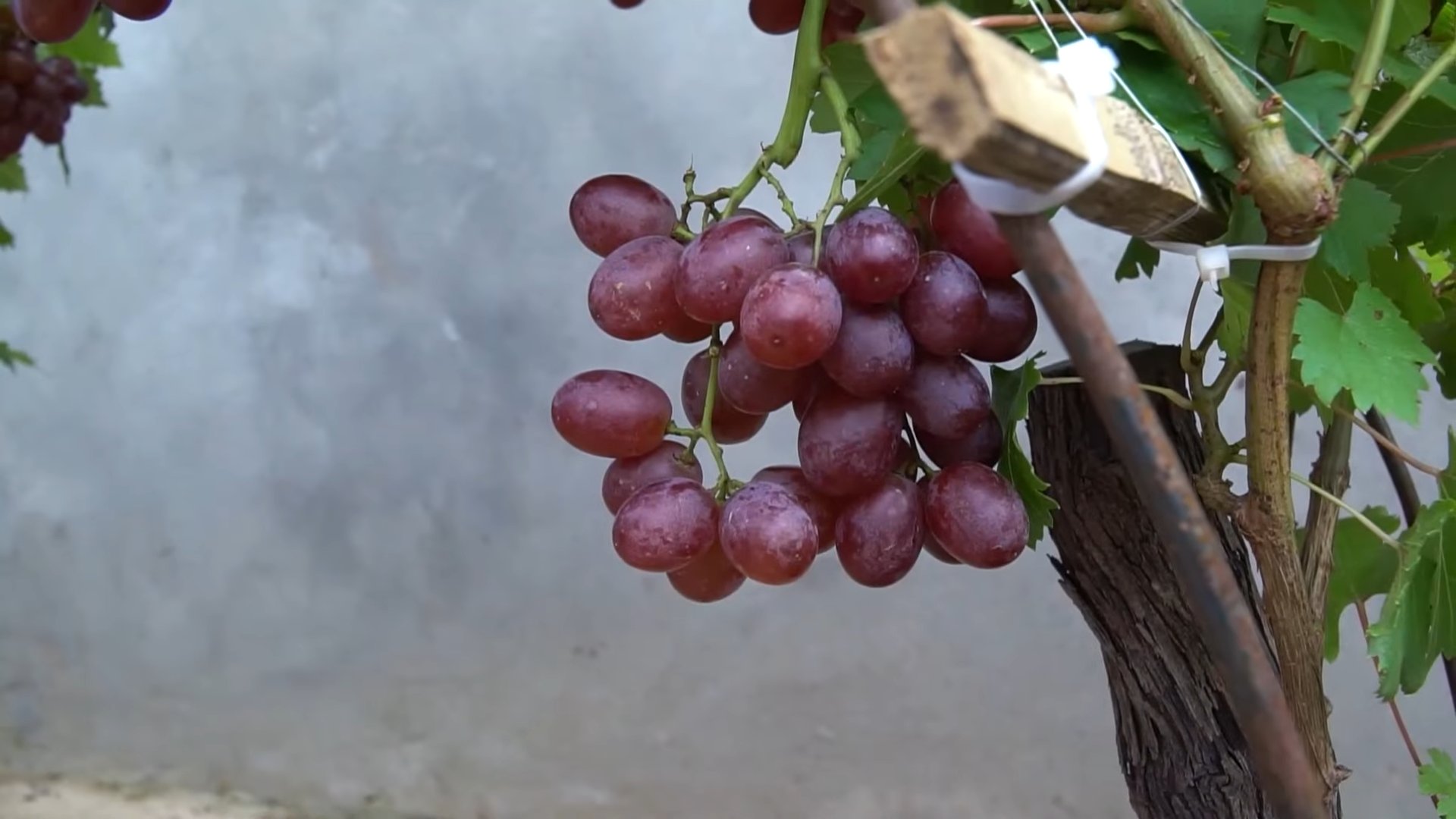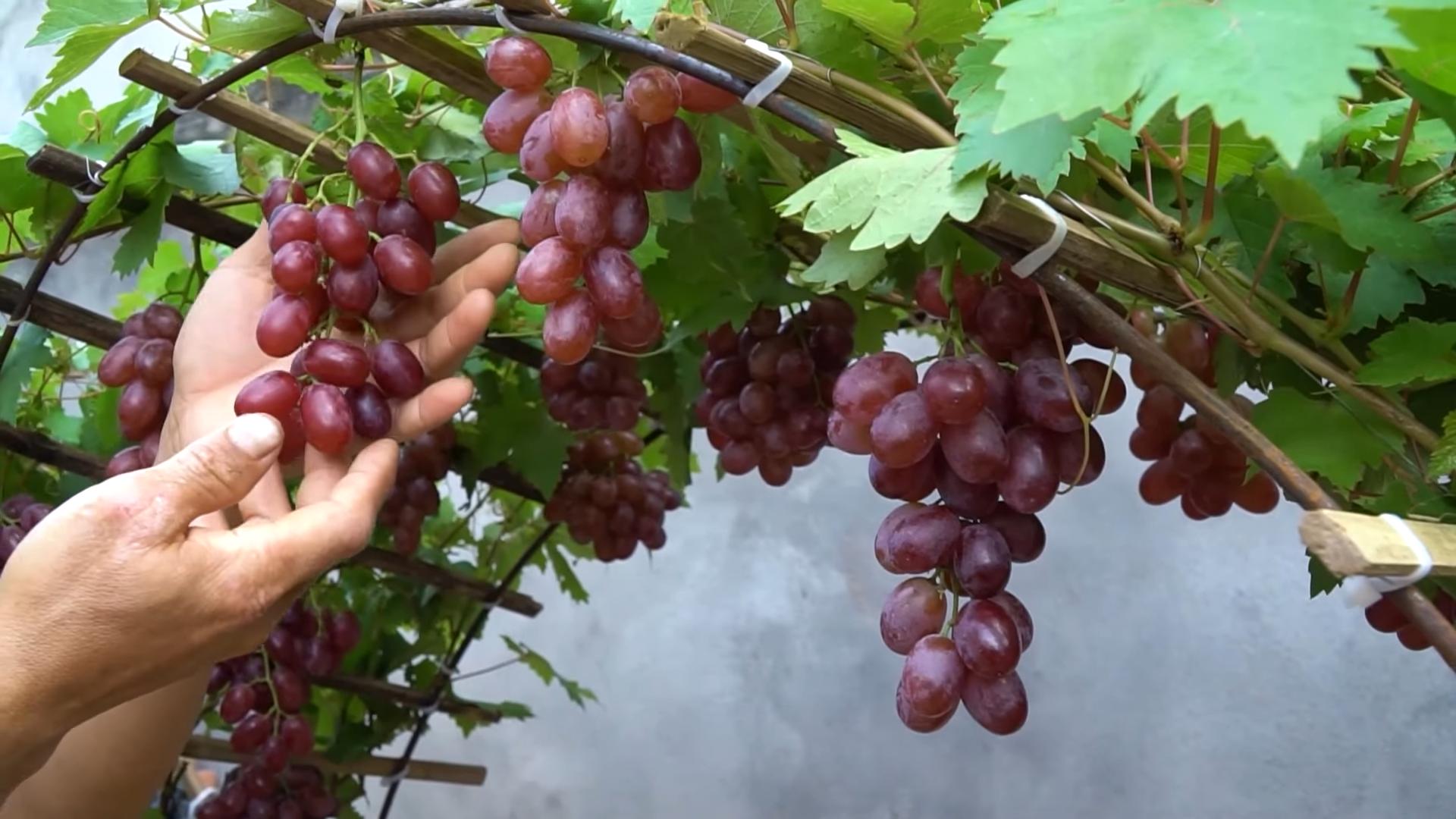Grow Grapes Backyard – sounds like a dream, right? Imagine stepping outside your back door and plucking juicy, sun-ripened grapes straight from the vine. It’s more achievable than you think! For centuries, cultivating grapes has been a symbol of abundance and prosperity, deeply woven into the fabric of cultures around the world, from ancient Rome to modern-day vineyards. The art of viticulture, as it’s known, might seem intimidating, but I’m here to tell you that with a few clever DIY tricks and hacks, you can successfully grow grapes backyard, even if you’re a complete beginner.
Let’s face it, store-bought grapes can be expensive and often lack the intense flavor of homegrown varieties. Plus, there’s something incredibly satisfying about nurturing a plant from a tiny seedling to a bountiful producer. This article is packed with easy-to-follow tips and DIY solutions that will help you choose the right grape variety for your climate, prepare your soil, build a simple trellis system, and protect your precious vines from pests and diseases. I’ll share my personal experiences and favorite hacks to ensure you have a thriving grape harvest year after year. So, grab your gardening gloves, and let’s get started on this exciting journey to grow your own delicious grapes!

Growing Grapes in Your Backyard: A Comprehensive DIY Guide
Okay, so you want to grow grapes in your backyard? Awesome! It’s totally doable, and there’s nothing quite like enjoying grapes you’ve grown yourself. It might seem a little intimidating at first, but trust me, with a little planning and effort, you can be harvesting your own delicious grapes in a few years. I’m going to walk you through everything you need to know, from choosing the right variety to pruning like a pro. Let’s get started!
Choosing the Right Grape Variety
This is probably the most important step. You can’t just plant any grape and expect it to thrive. You need to consider your climate, soil type, and what you want to use the grapes for (eating, juice, wine).
* Climate: Grapes need a certain amount of “chill hours” (hours below 45°F) to properly set fruit. Some varieties need a lot, others need very few. Check your local climate data to see how many chill hours your area gets. Also, consider your growing season length. Some grapes ripen earlier than others.
* Soil: Grapes prefer well-drained soil. If your soil is heavy clay, you’ll need to amend it with organic matter. We’ll talk more about that later.
* Purpose: Do you want table grapes for snacking? Wine grapes for making your own vino? Or grapes for juice and jams? Different varieties are better suited for different purposes.
Here are a few popular and relatively easy-to-grow grape varieties to consider:
* ‘Thompson Seedless’: A classic table grape, great for eating fresh. Needs a long, warm growing season.
* ‘Concord’: A popular juice grape, also good for jams and jellies. Very cold-hardy.
* ‘Niagara’: Another good juice grape, with a distinctive “foxy” flavor.
* ‘Reliance’: A seedless red table grape that’s very cold-hardy.
* ‘Mars’: A seedless blue table grape, disease-resistant and relatively easy to grow.
* ‘Cabernet Sauvignon’: A popular red wine grape, but requires a longer growing season and more specific climate conditions.
* ‘Chardonnay’: A popular white wine grape, similar requirements to Cabernet Sauvignon.
I highly recommend contacting your local agricultural extension office or a reputable nursery. They can give you specific recommendations for grape varieties that will thrive in your area.
Preparing the Planting Site
Okay, you’ve chosen your grape variety. Now it’s time to get the planting site ready. This is where a little hard work pays off big time.
* Sunlight: Grapes need at least 6-8 hours of direct sunlight per day. Choose a location that gets plenty of sun.
* Soil Drainage: As I mentioned before, well-drained soil is crucial. Grapes hate having wet feet. If your soil is heavy clay, you’ll need to amend it.
* Soil Testing: It’s a good idea to get your soil tested to determine its pH and nutrient levels. You can usually get this done through your local agricultural extension office. Grapes prefer a slightly acidic soil pH (around 6.0-7.0).
* Clearing the Area: Remove all grass, weeds, rocks, and debris from the planting area.
* Amending the Soil: This is where you improve the soil’s drainage and fertility. Dig in plenty of organic matter, such as compost, well-rotted manure, or peat moss. I usually aim for a ratio of about 1 part organic matter to 2 parts soil.
* Spacing: Grapevines need plenty of space to grow. The exact spacing will depend on the variety and the training system you’re using, but generally, you’ll want to space vines about 8-10 feet apart in rows that are 10-12 feet apart.
Building a Trellis System
Grapes are vines, so they need something to climb on. A trellis system provides support and helps to train the vines for optimal fruit production. There are many different types of trellis systems you can build, but here are a couple of popular options:
* Single-Wire Trellis: This is the simplest type of trellis. It consists of a single wire stretched between posts. It’s best suited for varieties that don’t produce a lot of foliage.
* Two-Wire Trellis: This is similar to the single-wire trellis, but with two wires spaced about 2-3 feet apart. It provides more support for the vines.
* Vertical Shoot Positioning (VSP) Trellis: This is a more complex trellis system that involves multiple wires and posts. It’s designed to train the shoots vertically, which improves sunlight penetration and air circulation.
Here’s how to build a basic two-wire trellis:
1. Set the Posts: Use sturdy wooden or metal posts that are at least 8 feet long. Set the posts about 2-3 feet deep in the ground, spacing them about 10-12 feet apart. Use concrete to secure the posts if necessary.
2. Attach the Wires: Use galvanized steel wire that is at least 12 gauge thick. Attach the wires to the posts using wire staples or insulators. The first wire should be about 3-4 feet above the ground, and the second wire should be about 2-3 feet above the first wire.
3. Tension the Wires: Use wire tensioners to tighten the wires. The wires should be taut but not too tight.
Planting the Grapevines
Now for the fun part – planting!
1. Timing: The best time to plant grapevines is in early spring, after the last frost.
2. Soaking: Before planting, soak the roots of the grapevine in water for about an hour.
3. Digging the Hole: Dig a hole that is large enough to accommodate the root system of the grapevine. The hole should be about twice as wide as the root ball and just as deep.
4. Planting: Carefully remove the grapevine from its container and gently loosen the roots. Place the grapevine in the hole, making sure that the top of the root ball is level with the ground. Backfill the hole with soil, gently tamping it down around the roots.
5. Watering: Water the grapevine thoroughly after planting.
6. Mulching: Apply a layer of mulch around the base of the grapevine to help retain moisture and suppress weeds. Use organic mulch, such as wood chips or straw.
Caring for Your Grapevines
Okay, you’ve planted your grapevines. Now it’s time to take care of them. This involves watering, fertilizing, pruning, and pest control.
* Watering: Water your grapevines regularly, especially during dry periods. Young grapevines need more frequent watering than established vines. Aim to keep the soil consistently moist but not waterlogged.
* Fertilizing: Fertilize your grapevines in the spring with a balanced fertilizer. Follow the instructions on the fertilizer label. You can also amend the soil with compost or well-rotted manure.
* Pruning: Pruning is essential for grape production. It helps to shape the vine, remove dead or diseased wood, and promote fruit production. We’ll talk more about pruning in the next section.
* Pest and Disease Control: Grapes are susceptible to a variety of pests and diseases. Monitor your vines regularly for signs of problems. Common pests include aphids, Japanese beetles, and grape phylloxera. Common diseases include powdery mildew, downy mildew, and black rot. Use appropriate pesticides or fungicides to control pests and diseases. Organic options are available.
Pruning Grapevines
Pruning is probably the most intimidating part of growing grapes, but it’s also one of the most important. Don’t worry, I’ll break it down for you.
* Why Prune? Pruning controls the size and shape of the vine, removes dead or diseased wood, and most importantly, promotes fruit production. Grapes produce fruit on new growth that comes from one-year-old wood. Pruning encourages the growth of this one-year-old wood.
* When to Prune: The best time to prune grapevines is in late winter or early spring, before the buds begin to swell.
* Pruning Methods: There are two main pruning methods: cane pruning and spur pruning.
* Cane Pruning: This method involves removing most of the previous year’s growth, leaving only a few canes (long, slender shoots) with a certain number of buds. Cane pruning is best suited for varieties that produce fruit on buds that are further away from the main trunk.
* Spur Pruning: This method involves cutting back the previous year’s growth to short spurs (short, stubby shoots) with only a few buds.

Conclusion
So, there you have it! Growing grapes in your backyard might seem like a daunting task reserved for seasoned vineyard owners, but with a little know-how and the right approach, it’s entirely achievable – and incredibly rewarding. This DIY guide has hopefully demystified the process, showing you that cultivating your own delicious grapes is not only possible but also a fantastic way to connect with nature and enjoy the fruits (literally!) of your labor.
Why is this DIY grape-growing trick a must-try? Because it empowers you to control the entire process, from selecting the perfect variety for your climate and taste to ensuring the grapes are grown organically and sustainably. Imagine the satisfaction of serving homemade grape juice, crafting your own jam, or even attempting a small batch of backyard wine, all from grapes you nurtured yourself. The flavor of homegrown grapes, bursting with sunshine and free from commercial pesticides, is simply unparalleled. Plus, a thriving grapevine adds beauty and shade to your backyard, creating a tranquil and productive space.
Don’t be afraid to experiment! Consider different grape varieties suited to your region. Some popular choices include Concord grapes for their classic flavor and hardiness, Thompson Seedless for fresh eating, or Cabernet Sauvignon if you’re feeling ambitious about winemaking. You can also explore different training methods, such as the cordon system or the pergola style, to maximize sunlight exposure and grape production. Another variation to consider is companion planting. Certain herbs and flowers can deter pests and attract beneficial insects, creating a healthier environment for your grapevines. Marigolds, basil, and lavender are all excellent choices.
Growing grapes backyard is more than just a gardening project; it’s an investment in your well-being and a connection to the natural world. It’s a chance to learn new skills, enjoy fresh, healthy produce, and create lasting memories with family and friends.
We wholeheartedly encourage you to give this DIY trick a try. Start small, be patient, and don’t be discouraged by initial setbacks. Gardening is a learning process, and every season brings new opportunities to improve your techniques.
Most importantly, we want to hear about your experiences! Share your successes, your challenges, and your tips in the comments below. Let’s create a community of backyard grape growers who can learn from each other and inspire others to embark on this rewarding journey. What variety did you choose? What challenges did you face, and how did you overcome them? Your insights could be invaluable to someone just starting out. So, grab your gardening gloves, choose your grape variety, and get ready to experience the joy of growing your own grapes!
Frequently Asked Questions (FAQ)
What is the best time of year to plant grapevines?
The ideal time to plant grapevines is in early spring or late fall, when the plants are dormant. This allows the roots to establish themselves before the heat of summer or the cold of winter sets in. If you live in a region with harsh winters, spring planting is generally recommended to give the vines ample time to acclimate. When planting in the fall, make sure to mulch heavily around the base of the vines to protect them from freezing temperatures.
How much space do grapevines need?
Grapevines need plenty of space to grow and thrive. Generally, you should space grapevines 8 to 10 feet apart in rows that are 10 to 12 feet apart. This spacing allows for adequate sunlight penetration and air circulation, which are crucial for preventing diseases. If you’re growing grapes on a trellis or arbor, make sure the structure is strong enough to support the weight of the mature vines and the grape clusters. Consider the mature size of the specific variety you’re planting, as some varieties can be more vigorous than others.
What kind of soil is best for growing grapes?
Grapes prefer well-drained soil that is slightly acidic to neutral (pH 6.0 to 7.0). The soil should be rich in organic matter and have good drainage to prevent root rot. Before planting, it’s a good idea to conduct a soil test to determine the pH level and nutrient content. Amend the soil with compost or other organic matter to improve drainage and fertility. Avoid planting grapes in heavy clay soil, as it can retain too much moisture and suffocate the roots. If you have clay soil, consider planting in raised beds or amending the soil with sand and compost to improve drainage.
How often should I water my grapevines?
Newly planted grapevines need regular watering to establish their root systems. Water deeply once or twice a week, especially during dry periods. Once the vines are established, they are relatively drought-tolerant and don’t need as much watering. However, during periods of prolonged drought, it’s important to water deeply to prevent stress. Avoid overwatering, as this can lead to root rot. A good rule of thumb is to water when the top inch of soil feels dry to the touch.
Do grapevines need fertilizer?
Grapevines benefit from regular fertilization, especially during the growing season. Use a balanced fertilizer that is specifically formulated for grapes or fruit trees. Apply fertilizer in early spring, just before the vines begin to grow. Avoid over-fertilizing, as this can lead to excessive vegetative growth and reduced fruit production. A soil test can help you determine the specific nutrient needs of your soil and guide your fertilization strategy. Organic fertilizers, such as compost and manure, are also excellent choices for providing nutrients to your grapevines.
How do I prune grapevines?
Pruning is essential for maintaining the health and productivity of grapevines. Prune grapevines in late winter or early spring, before the buds begin to swell. Remove any dead, damaged, or diseased wood. Also, remove any suckers that are growing from the base of the vine. The goal of pruning is to encourage fruit production and maintain the shape of the vine. Different grape varieties and training systems require different pruning techniques, so it’s important to research the specific needs of your vines. There are many excellent resources available online and in gardening books that can guide you through the pruning process.
How do I protect my grapevines from pests and diseases?
Grapevines are susceptible to a variety of pests and diseases, including aphids, Japanese beetles, powdery mildew, and black rot. To protect your vines, monitor them regularly for signs of infestation or disease. Use organic pest control methods, such as insecticidal soap or neem oil, to control pests. Prune your vines regularly to improve air circulation and reduce the risk of disease. Choose disease-resistant grape varieties whenever possible. If you suspect a disease, consult with a local extension agent or plant pathologist for diagnosis and treatment recommendations.
How long does it take for grapevines to produce fruit?
It typically takes 2 to 3 years for grapevines to begin producing fruit. The first year is focused on establishing the root system and vegetative growth. In the second year, the vines will begin to produce some fruit, but the yield will be relatively small. By the third year, the vines should be producing a more substantial crop. The exact time it takes for grapevines to produce fruit depends on the variety, the growing conditions, and the care provided. Be patient and continue to provide proper care, and you will eventually be rewarded with a bountiful harvest of delicious grapes.





Leave a Comment